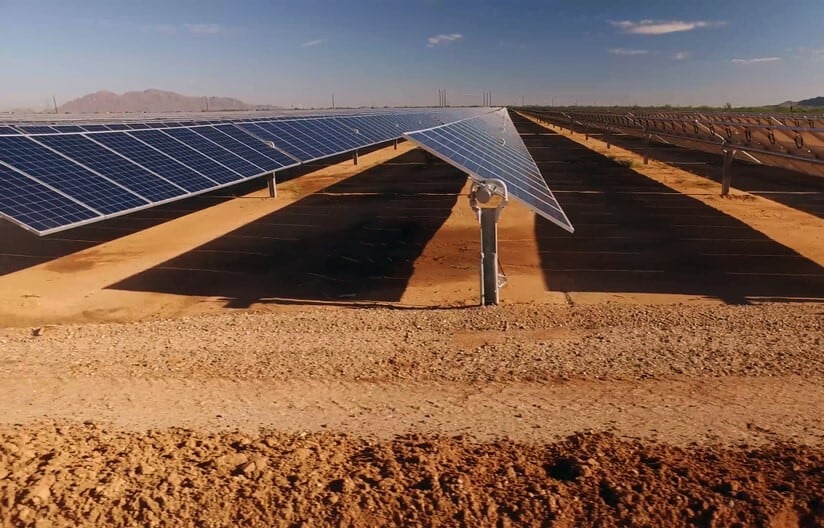The UAE is expected to start operating one of the world’s largest solar plants in a few months, the Al Dhafra Solar PV Plant, located in the desert 35 kilometers south of the UAE capital Abu Dhabi.
The UAE is home to solar power plants ranked among the largest in the world, which comes in light of the country’s move to generate clean electricity that reduces its carbon emissions.
Last year, the UAE was able to provide more than 50 percent of its total energy demand through renewable and clean sources through solar and nuclear power plants.
UAE’s TAQA and Masdar own 60 percent of the Al Dhafra plant, while Ginco Power Technologies and Electricité de France own 40 percent.
AFP quoted the Al Dhafra plant as saying it was “the world’s largest independent single-site solar power plant”, and that it had started producing the first kilowatt hours of electricity at the end of last year and would officially start operating before the summer.
Read: UAE’s AMEA announces $120 mn solar project in South Africa
According to the official website of the UAE Ministry of Energy, the construction of the Al Dhafra plant aims to reduce the emirate’s carbon emissions by more than 2.4 million metric tons per year, equivalent to removing about 470,000 cars from the road, providing electricity to more than 160,000 homes in the UAE, recording a tariff among the most competitive in the world in the cost of solar photovoltaic energy of 4.97 fils per kilowatt hour, and raising the total production capacity of solar energy in Abu Dhabi to about 3.2 gigawatts.
French Economy Minister Bruno Le Maire, who visited the UAE on Monday, visited the site and praised what he described as “very close cooperation” between his country and the UAE in the field of renewable energy.
Solar Power Plants
There is no doubt that the UAE has many solar power plants. To Al Dhafra station, for example, Shams 1 is a station that opened in March 2013 in Abu Dhabi. It was then the first and largest renewable energy project in operation in the Middle East, with a production capacity of 100 MW.
The plant prevents the release of 175,000 tons of carbon dioxide per year.
There is also the Mohammed bin Rashid Al Maktoum Solar Park. It is expected to have a total production capacity of about 5,000 megawatts by 2030, with an investment of $13.6 billion, making it among the largest solar power plants.
Upon completion, the complex will reduce more than 6.5 million tons of carbon emissions annually.
Another of the largest solar power plants in the UAE is Noor Abu Dhabi, which began commercial operations in April 2019, at an investment cost of AED3.2 billion ($800 million).
As part of the Dubai Clean Energy Strategy 2050, the world’s largest concentrated solar power (CSP) project, 1,000 MW of Concentrated Solar Power (CPP) has been announced until 2030.
The complex is the largest CSP project in the world, surpassing the world’s largest CSP tower in Morocco with a capacity of 150 MW.
Upon completion, the project will reduce more than 6.5 million tons of carbon emissions annually, and will use thermal storage technology for a period of 8 to 12 hours per day, taking into account technical and economic factors, which will contribute to raising the efficiency and effectiveness of production, and providing a sustainable supply of energy.
Globally, thanks to its low cost, renewable energy is more attractive everywhere, including in low- and middle-income countries, where most of the additional demand will be for renewable electricity.
The World Bank estimates that low-cost electricity generated from renewable sources could provide 65 percent of the world’s total electricity supply by 2030. It could decarbonize 90 percent of the energy sector by 2050, while significantly reducing carbon emissions and helping to mitigate climate change.
The IEA says that although solar and wind costs in 2022 and 2023 are expected to remain above pre-pandemic levels due to the general rise in commodity and shipping prices, its competitiveness is already improving due to sharper increases in gas and coal prices.
For more on Solar energy, Click here.








